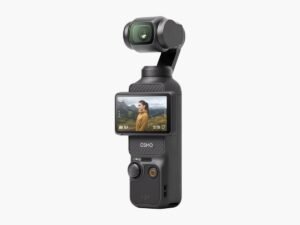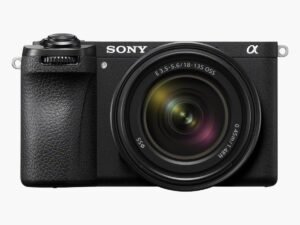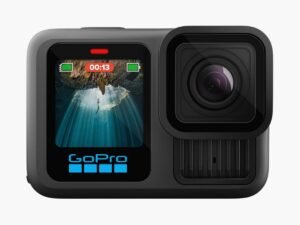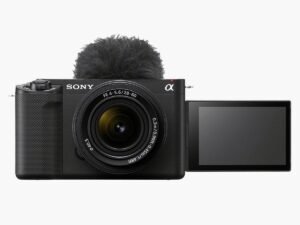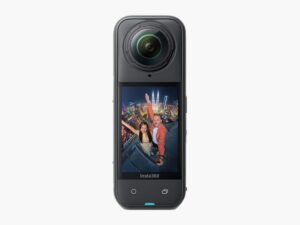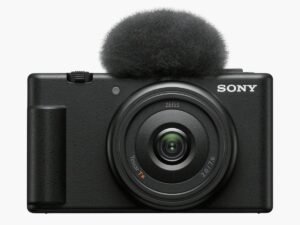The best vlogging cameras 2025: Make pro level vlogs anywhere, any time
A vlogging camera offers tons of advanced features for making great vlogs. We’ve tested them to know they deliver real benefits over standard cameras. They pack larger image sensors than your typical smartphone, which translates to sharper imagery and much better low-light performance. Dedicated-built for self-recording, they come with fully articulated screens that flip around so you can actually see yourself while filming. Plus, most include directional microphones with wind reduction tech and proper external mic inputs for clean audio capture.
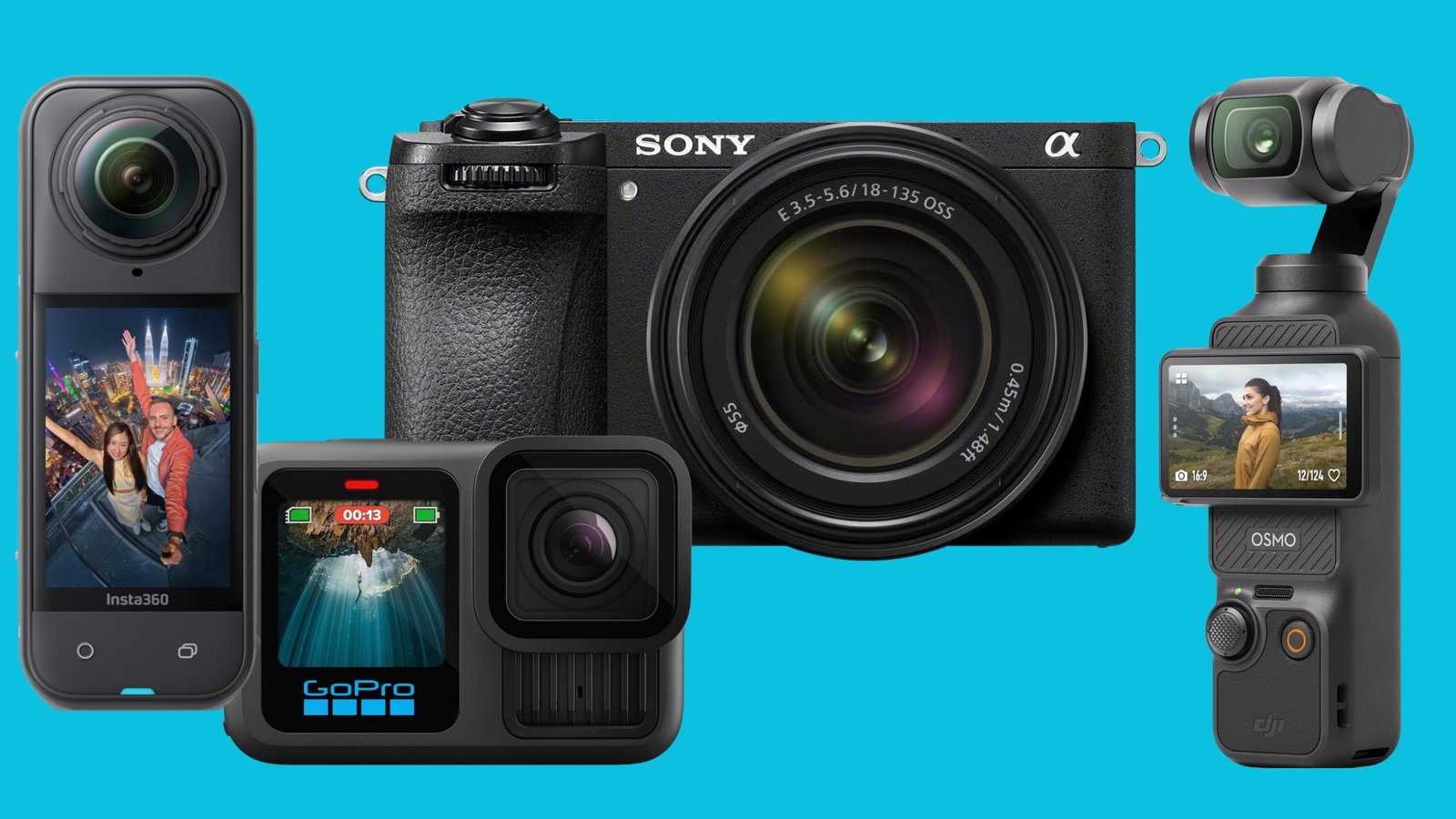
Choosing the right camera type can make or break your budget—and your vlog quality. That’s what this guide is all about—showing you which vlogging camera features deliver real value and help you dodge unnecessary accessory expenses. Whether you’re just starting your channel or ready to upgrade from your current setup, understanding these key features means you’ll get proper bang for your buck without breaking the bank on stuff you don’t actually need.
Best Vlogging Cameras
- Best Overall: DJI Osmo Pocket 3 Camera
- Best Value: GoPro Hero 13 Black Camera
- Best Premium: Sony Alpha 6700 Camera
- Most Compact: Canon EOS R50 V Camera
- Easiest To Use: Insta360 X5 Camera
If you are ready to move past using just your phone for making videos, and you feel certain about sticking with vlogging as either a fun activity or a way to earn money from YouTube channel, we can suggest a range of vlogging cameras to upgrade your video quality. The right vlogging camera should feel natural and enable your creative vision. Whatever your skill level or budget, you’ll find the best camera for vlogging in 2025 and beyond.
QUICK LIST
VERDICT
The DJI Osmo Pocket 3 is the best vlogging camera. That’s it, verdict over and there are ton of reasons like 4k resolution and 3-axis mechanical stabilization.
The Best Vlogging Camera Overall
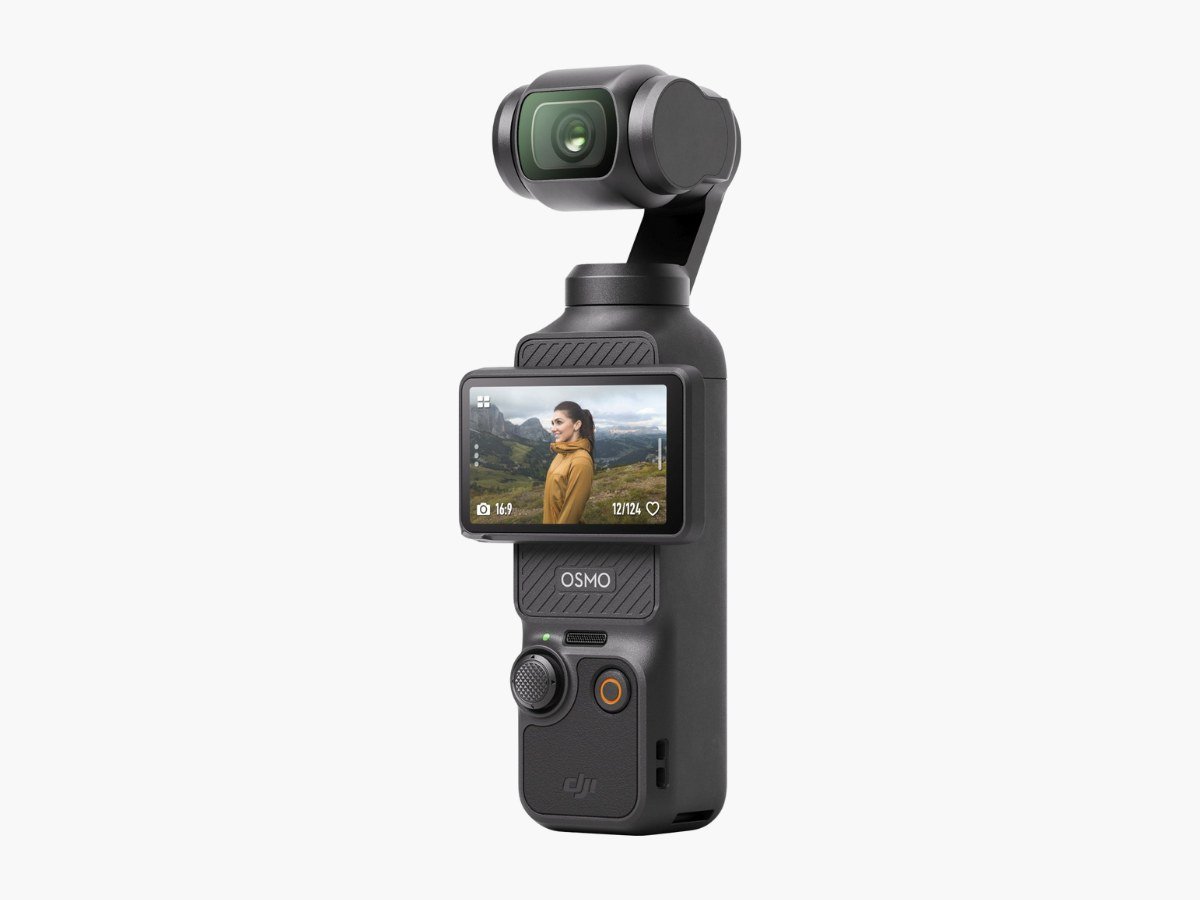
The best vlogging camera on the market right now is the DJI Osmo Pocket 3. In our testing lab, the DJI Osmo Pocket 3 performed well across the board. Compared to many of its rivals, its still well-priced and really is worth the money.
Combining professional-grade 4K resolution with incredible portability, the DJI Osmo Pocket 3 is not only the best vlogging camera, but the best video camera for pro-level videography.
Its latest 3-axis mechanical gimbal offers impressive controllable ranges (pan: -235° to 58°, tilt: -120° to 70°, roll: -45° to 45°) to capture shots from almost any angle. With a maximum controllable speed of 180°/s, the system responds rapidly to subject movement, making it right pick for action and sports vlogging.
It features 3 distinct gimbal modes: Follow, Tilt Locked, and FPV so you can select the most accurate stabilization profile according to conditions. The gimbal’s angular vibration range of just ±0.005° delivers professional stabilization that beats what you get from smartphones and many compact cameras.
The feature to really discuss is its 1-inch CMOS sensor, an upgrade from the 1/1.7-inch sensor in its predecessor. This bigger sensor captures better details and works great in low lighting conditions, which helps vloggers who shoot in different environments.
We think that the DJI Pocket 3 is the best 4k vlogging camera because it can record 4K videos at up to 120fps in slow motion mode. You can create dramatic sequences with smooth playback. The camera also shoots at 1080p/240fps for amazing 8x slow-motion effects. Professional color options include 10-bit D-Log M and 10-bit HLG, giving creators greater flexibility during post-production.
DJI pocket 3 has built-in 1300mAh battery runs longer than you’d expect from such a small camrea. When fully charged, it can record up to 116 minutes of 4K/60fps footage or 166 minutes of 1080p/24fps video. Perhaps most impressive is its charging speed—the battery reaches 80% in just 16 minutes and 100% in approximately 32 minutes when using compatible PD chargers.
The DJI Osmo Pocket 3 offers everything from professional-grade 4K resolution and unmatched stabilization to latest vlogging focused features in a pocket-sized option.
It’s the best vlogging camera we’ve ever tested, and believe me, we’ve tried the top contenders. The DJI Pocket 3? Well, it beats them all.
The Best Upper Mid-Range Vlogging Camera
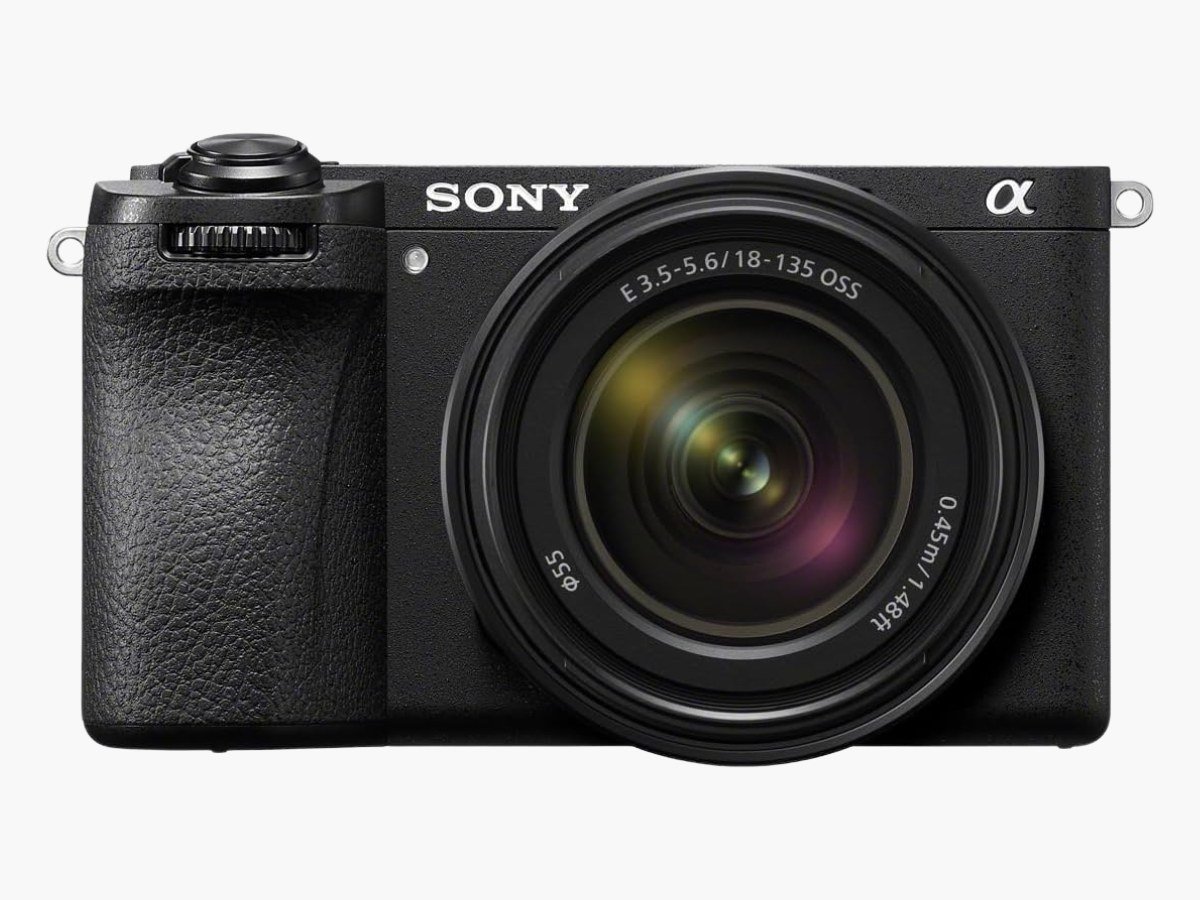
The Sony a6700 is known for the best of hybrid camera technology without compromising on video or photo capabilities. You can make 4K resolution vlogs at up to 120 frames per second, thanks to its powerful 26.0MP back-illuminated APS-C Exmor R CMOS sensor that works with the advanced BIONZ XR processor, which adds cinematic slow-motion effects to your vlogs. The pro features include 10-bit 4:2:2 video recording at bitrates up to 600 Mb/s, giving you professional-grade color depth and editing flexibility.
For video creators concerned about overheating, the a6700 can record 4K30p for over two hours or 4K60p for more than 40 minutes on a 128GB card without shutting down.
We’ve reviewed that most of the handheld vlogging becomes effortless at tough conditions, thanks to the a6700’s pixel-level 5-axis optical image stabilization that has the ability to balance for 5 different types of camera shake, maintaining stability even in outdoor vlogging. Beyond standard stabilization, the Active SteadyShot mode adds digital enhancement that rivals gimbal-quality results solely through in-camera processing.
The alpha 6700’s versatility also extends to its lens compatibility. Since it uses Sony’s E-mount system, vloggers can choose from a wide range of both dedicated APS-C lenses and full-frame options including everything from ultra-wide-angle vlogging with the Sony 11mm f/1.8 to telephoto reach with the 70-350mm zoom.
It’s equipped with a high-capacity NP-FZ100 battery lets you take about 570 shots using the LCD screen or 550 shots with the EVF. Video recording lasts around 100 minutes continuously. You can power the camera through USB from a computer or power bank to extend your recording time. Despite its professional capabilities, the a6700 maintains excellent portability, measuring just 4.87 x 2.75 x 3.0 inches and weighing 17.39 ounces with battery and memory card installed. Its ergonomic grip makes one-handed vlogging comfortable during continuous recording.
Perhaps the a6700’s most impressive upgrade is its AI-powered autofocus system. With 759 phase-detection points covering 93% of the frame, the camera offers unparalleled subject tracking. The dedicated AI Processing Unit enhances recognition capabilities, accurately identifying and tracking humans, animals, birds, insects, cars, trains, and airplanes. For vloggers, the eye-tracking functionality proves invaluable, maintaining precise focus on your eyes even during jerks.
Priced at $1,399 for the body, the Sony a6700 stands as the ultimate hybrid camera for serious vloggers, delivering professional-grade video capabilities in a compact, versatile package.
The Sony Alpha 6700 is a bit of a winner all around. If what you really want is video quality and portability combined in a camera, this is the one we reckon you should go for. The Sony Alpha 6700 isn’t just the best Sony Alpha camera we’ve tested—it’s one of the best cameras we’ve tested. If you’re looking for a fantastic all-arounder, this is the Sony vlogging camera to get.
The Best Ultra Cheap Vlogging Camera For Sports Videography
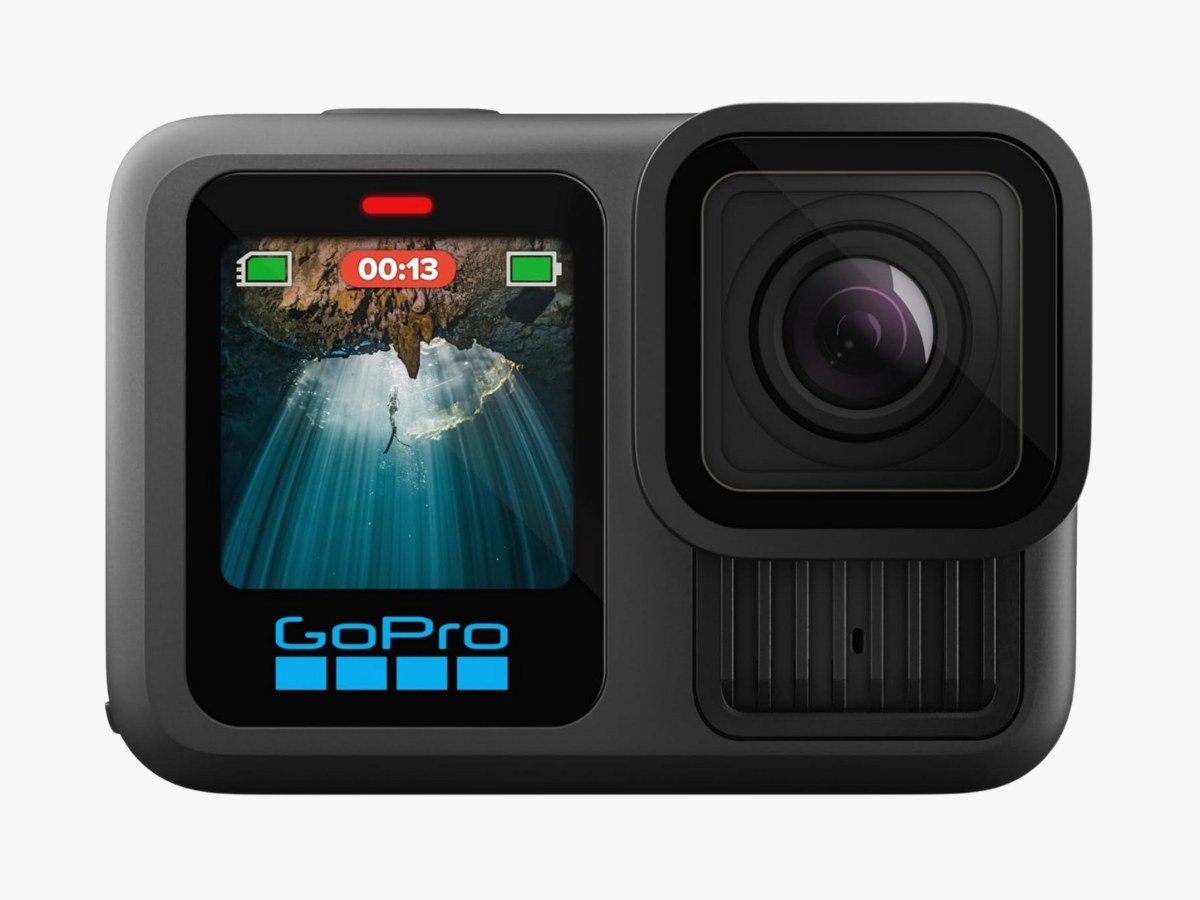
When it comes to extreme action vlogging, the GoPro Hero13 Black stands as the best vlogging camera for sports and adventure vloggers who need their camera to survive whatever they throw at it—literally.
GoPro’s latest HyperSmooth 6.0 technology has reshaped the class of action cameras. This next-generation stabilization analyzes footage 4x faster than its predecessor and delivers incredibly smooth results whatever the terrain throws at it. Furthermore, the intelligent AutoBoost feature automatically adjusts stabilization as needed while maintaining the smallest possible cropping margin. What truly beat others is its impressive 360° horizon lock capability—your vlog stays perfectly level even when the camera spins completely upside down.
Hero13 Black’s 1/1.9″ sensor is the biggest improvement that can make 5.3K video at 60fps, 4K at 120fps, and 2.7K at 240fps to produce amazing slow-motion effects. Its 8:7 aspect ratio sensor proves especially valuable for social media creators, as it allows you to crop into vertical 9:16, widescreen 16:9, traditional 4:3, or full-frame 8:7 formats from the same footage. In full 8:7 mode, you’ll enjoy an expansive 156° field of view, ensuring you never miss any action surrounding you.
For vloggers concerned about audio quality, the optional Media Mod transforms your Hero13 due to a built-in directional microphone for enhanced voice capture, two cold-shoe mounts for accessories, plus 3.5mm mic input and HDMI-out ports. First thing to remember, the removable foam windscreen effectively suppresses wind noise up to 20mph. Additionally, the Hero13 Black now supports wireless Bluetooth audio with Apple AirPods and other devices—perfect for scene narration or vlogging.
Above all, the Hero13 Black camera is waterproof to 33 feet without requiring any additional housing and safe to use during surfing, snorkeling, or rainy conditions. You get 3 mounting options: classic fold-down fingers, a tripod thread, and a new magnetic mount for quick setup changes. The better 1900mAh Enduro battery runs up to 2.5 hours of continuous recording at 1080p30 or 1.5 hours at 4K30/5.3K30.
If you’re after the range of vlog camera features without paying Sony or DJI money, then the GoPro Hero 13 Blacks gets you most of the way there on a bit of a budget. Okay, it is around half the price of those other brands but where it stands out is that it can really compete with other premium vlogging cameras when it comes to 4k resolution and stabilization, and not all budget cameras are able to do that. If you’re an adventurous vlogger, we think the GoPro Hero 13 Black is the best choice for you.
The Best Premium Full-Frame Vlogging Camera For 4K Resolution
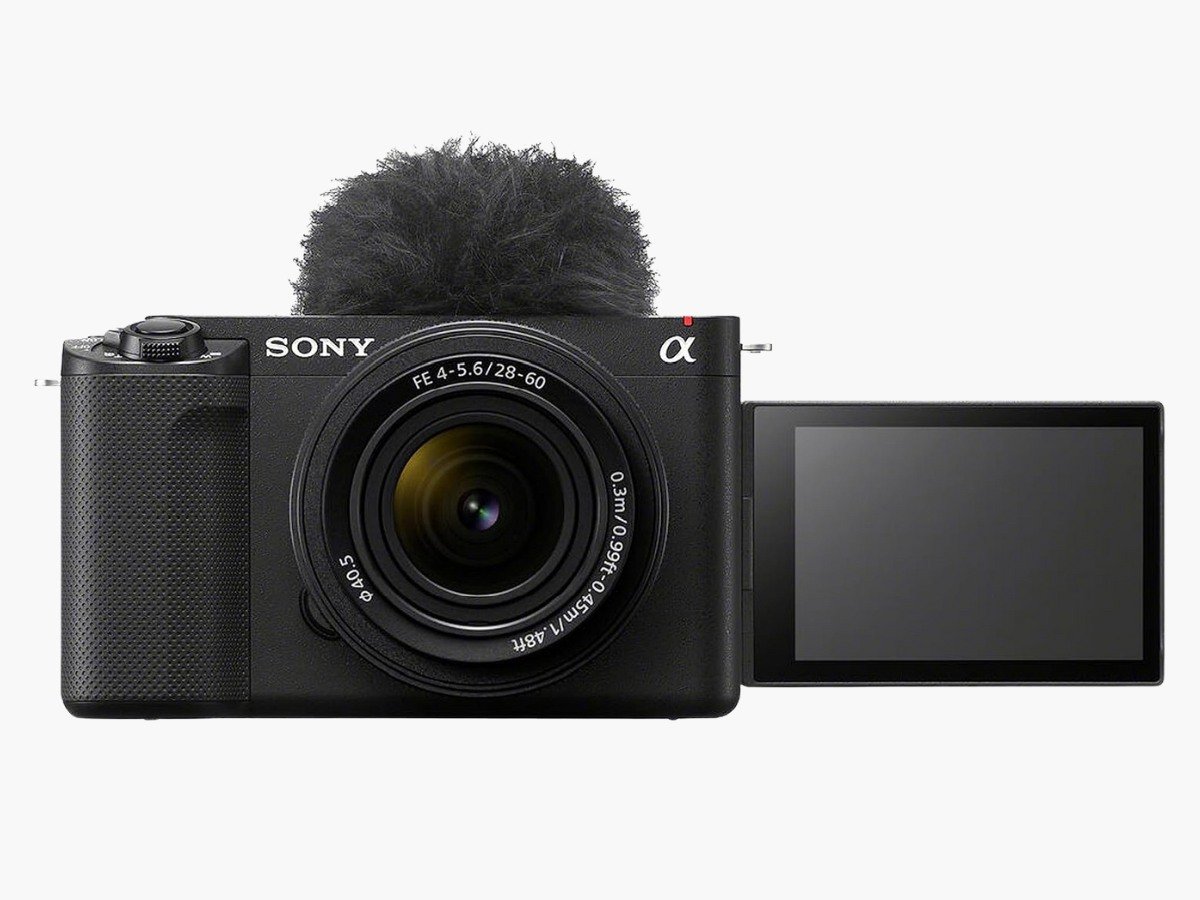
All in all, Sony ZV-E1 is one of the best Sony mirrorless cameras in its class. It offers cinema-quality vlogging capabilities to advanced content creators through its full-frame excellence and compact design. It comes with the same 12.1MP Exmor R sensor as the A7S III and FX3 cinema cameras but costs nowhere near as much at $2,000.
Its 12-megapixel full-frame sensor might seem modest, but this design choice delivers exceptional low-light performance with dual native ISOs at 640 and 12,800. It records virtually noise-free video up to ISO 25,600 and get usable results even at ISO 51,200.
For video shooting, it records 4K at 60fps with no crop factor, while a free firmware update adds 4K120p and 1080p/240fps capabilities for dramatic slow-motion sequences. Professional options include 10-bit 4:2:2 color recording with S-Log3, S-Cinetone, and other picture profiles that deliver an impressive 15 stops of dynamic range.
The ZV-E1 introduces groundbreaking AI features that transform solo vlogging. Auto Framing uses AI processing to follow recognized subjects, automatically cropping and recomposing shots to mimic professional camera movement. This feature works by cropping a 4K-resolution image while displaying the full angle of view on the monitor.
Furthermore, the Framing Stabilizer function maintains subject position during movement by using the camera’s Dynamic Active stabilization mode together with AI subject recognition. The camera excels at tracking subjects with its advanced AI processing unit, recognizing not just eyes but body and head positions—even when subjects turn away from the camera.
Built exclusively for vlogging, the ZV-E1 has a 5-axis in-body stabilization system rated for up to 5.0 stops. The Dynamic Active SteadyShot mode enhances stabilization approximately 30% beyond standard Active mode, rivaling the smoothness of the latest GoPro action cameras.
Sony ZV-E1 vlogging camera is the world’s smallest and lightest full-frame interchangeable lens camera with in-body stabilization. The ZV-E1’s dust and moisture-resistant design ensures reliable performance in any conditions. The camera uses Sony’s high-capacity Z battery with USB Power Delivery support for fast charging. This combination delivers approximately 570 shots or 120 minutes of continuous video recording per charge.
If you’re a video creator shooting alone, we still think the ZV-E1 is the best full-frame camera for 4K vlogging. We love the Sony ZV-E1, and it earned the top position in our best premium vlogging camera roundup for a long time due to its vlogger-focus features. The Sony ZV-E1 is simply fantastic to make vlogs and is built for pro-level videography. It’s the best high-end vlogging camera by far, still the one we’d have if we were looking to spend some serious cash.
The Best Mid-Range Vlogging Camera For The Money
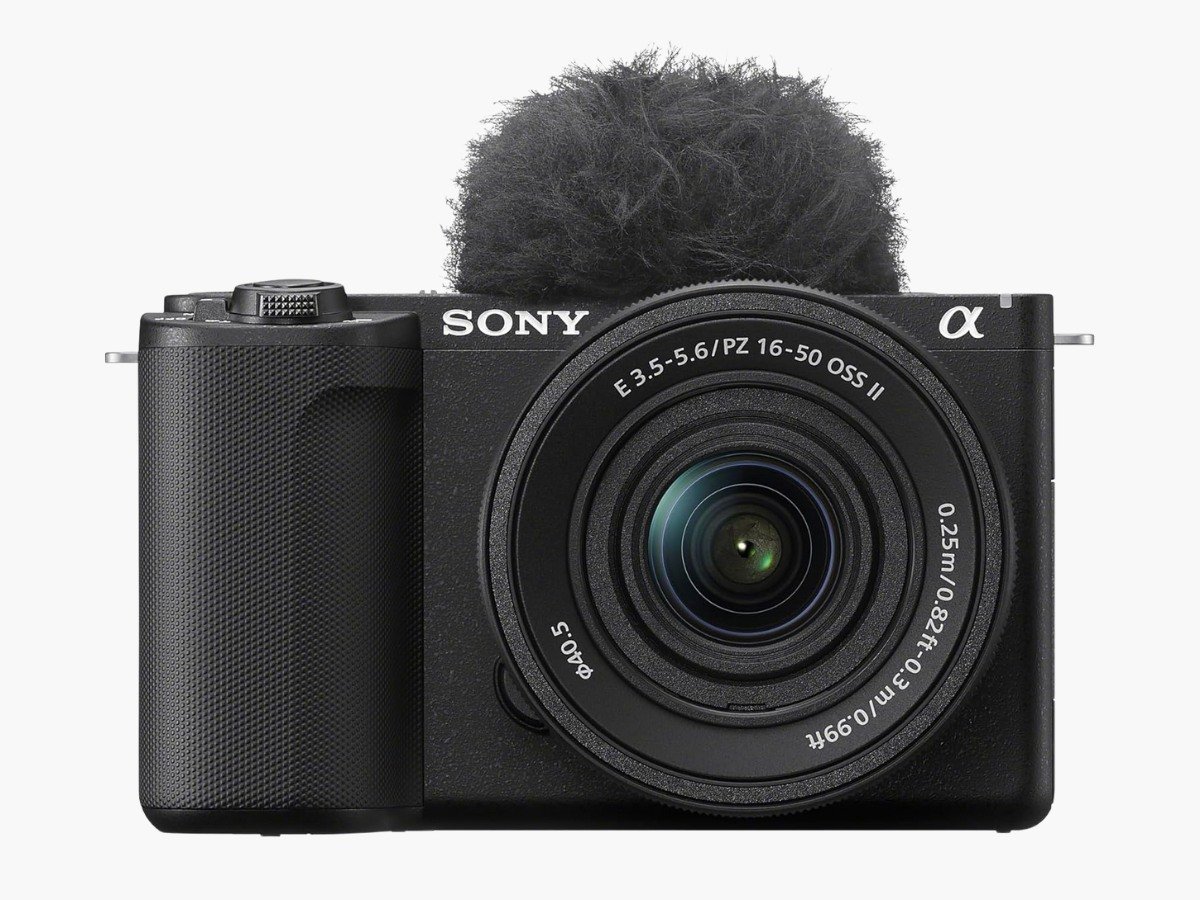
The Sony ZV-E10 II is the best affordable vlogging camera if you want don’t want to spend for something like ZV-E1. It gets a new 26-megapixel BSI APS-C sensor paired with Sony’s BIONZ XR processor, making it a huge step up from its predecessor.
The ZV-E10 II makes 4K resolution video at up to 60 frames per second with minimal crop (just 1.1x at 60fps). It oversamples from a full 5.6K readout for 4K30 footage, resulting in remarkably detailed video. You’ll get ultra detailed video thanks to the camera’s full 5.6K readout for 4K30 footage. On top of that, it supports internal 10-bit 4:2:2 color recording with bitrates up to 600Mbps, giving you more room to play with during color grading.
One standout feature that makes this camera perfect for product reviewers is the Product Showcase mode. When activated, the camera automatically shifts focus from your face to any object held up in frame without requiring any manual adjustments. This seamless transition keeps your videos looking professional without the distraction of hunting for focus.
Although the ZV-E10 II lacks in-body image stabilization (IBIS), it compensates with improved electronic stabilization through Active SteadyShot. This digital stabilization works particularly well at faster shutter speeds, helping smooth out handheld footage.
It’s best known for advanced autofocus system that performs incredible with 759 phase-detection points covering 93% of the frame. It represents a major improvement over the original ZV-E10’s 425 points covering 84% of the frame. You can track humans, animals, or birds with ease, making this camera perfect for making all types of vlogs.
The built-in camera’s directional three-capsule microphone lets you adjust sound pickup patterns. You can record audio from the front while vlogging, from behind while narrating, or from everywhere for ambient sound. The 3.5mm microphone and headphone ports are there if you want to use external audio gear.
A fully articulated touchscreen makes self-recording truly simple, and the new menu system’s touch functionality makes navigation easier. The quick CineVlog option applies S-Cinetone color profile and shoots in cinematic 2.35:1 aspect ratio at 24fps.
The ZV-E10 II features USB-C connectivity for charging and file transfer. Furthermore, it supports direct computer connection as a webcam without additional software, allowing 4K30 livestreaming capabilities. Focus Breathing Compensation has also been added, which helps remove the change in field of view when focusing.
Priced at around $999 for the body and $1099 with the 16-50mm kit lens, the ZV-E10 II represents excellent value despite being $300 more than the original model. Most importantly, it offers capabilities previously found only in higher-end vlogging cameras costing $1500 or more.
The Sony ZV-E10 II fixes almost all its predecessor’s shortcomings while staying reasonably priced. You get excellent video quality, reliable autofocus, and creator-focused features in the best vlogging camera that won’t break your bank. However, as an mid-range vlogging gear, the Sony ZV-E10 II is hard to beat.
The Best Budget Vlogging Camera
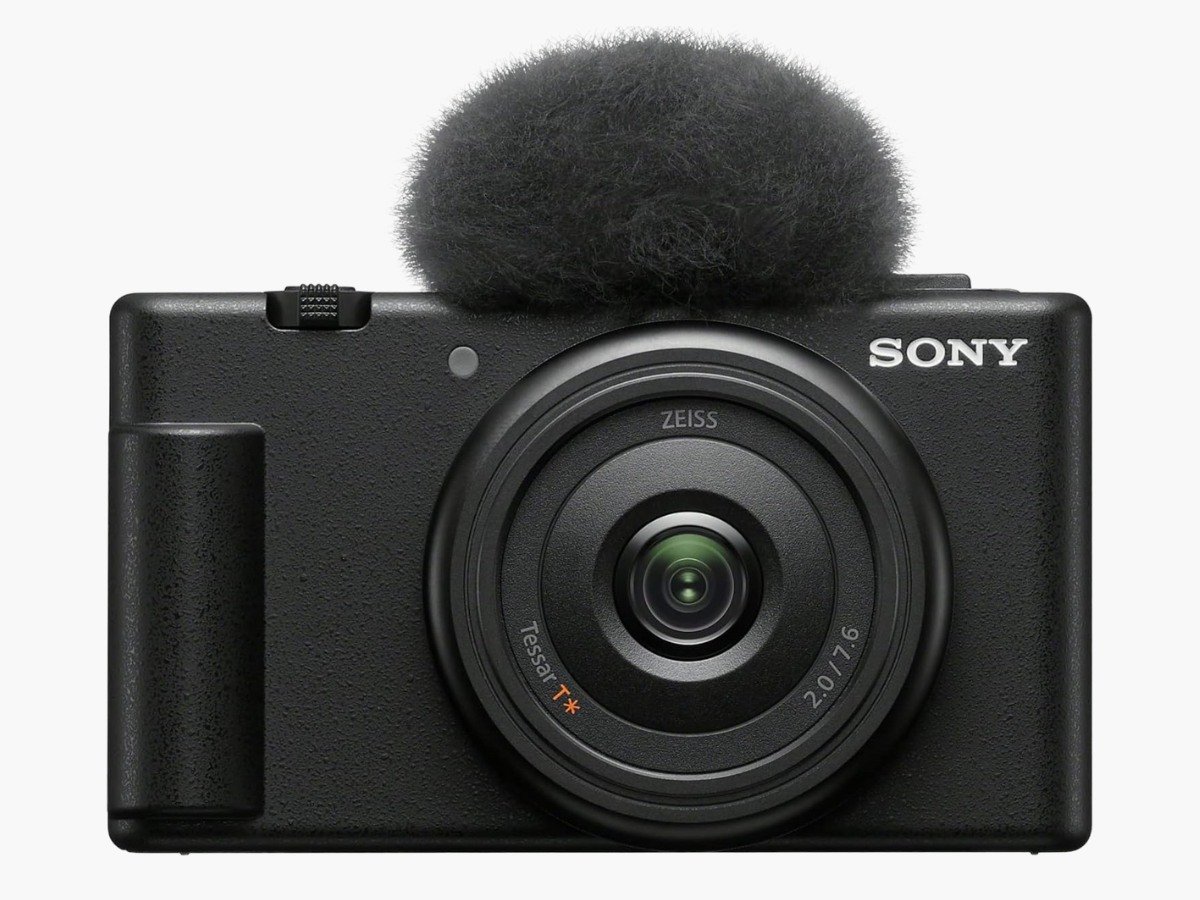
Looking for an entry point budget camera for vlogging without spending much cash? The Sony ZV-1F vlog camera is our recommendation due to accessibility and performance for newcomers to content creation.
As Sony’s most affordable vlogging camera, the ZV-1F combines a generous 1.0-type (13.2 mm x 8.8 mm) Exmor RS CMOS sensor with a fixed ZEISS Tessar T* 20mm equivalent lens. Its lightweight compact design weighs just 256g with battery included. You’ll love how the ultra-wide 20mm lens captures everything in frame, even when holding the camera at arm’s length.
It has a 3-inch fully articulating touchscreen offers excellent visibility with 921,600 dots and rotates up to 270 degrees, perfect for self-recording. Indeed, the touchscreen interface provides quick access to essential settings while vlogging, including the handy Product Showcase AF mode. A clean button layout keeps things simple yet practical, with a dedicated video record button and custom function controls.
The ZV-1F can also make 4K videos at 30fps and Full HD at up to 120fps for smooth slow-motion effects. Certainly, the camera is best beginner option with its content creator-focused features, including Product Showcase mode that automatically shifts focus when objects are held up to the camera. Its electronic stabilization smooths out your handheld footage, but keep in mind there’s no optical stabilization – something to remember when walking and shooting.
At $500, the ZV-1F vlog camera offers great value in Sony’s creator-focused lineup. We picked this camera for vloggers moving up from smartphone videography.
Overall, what you’re getting here is a budget camera that doesn’t look nor feel like the cheap option. It’s easy to carry, well-made, and ready to work in almost any setup. The Sony ZV-1F beats out every other camera in its price range by a large margin and is absolutely the best affordable vlogging camera you can buy right now.
The Best Value Hybrid Vlogging Camera
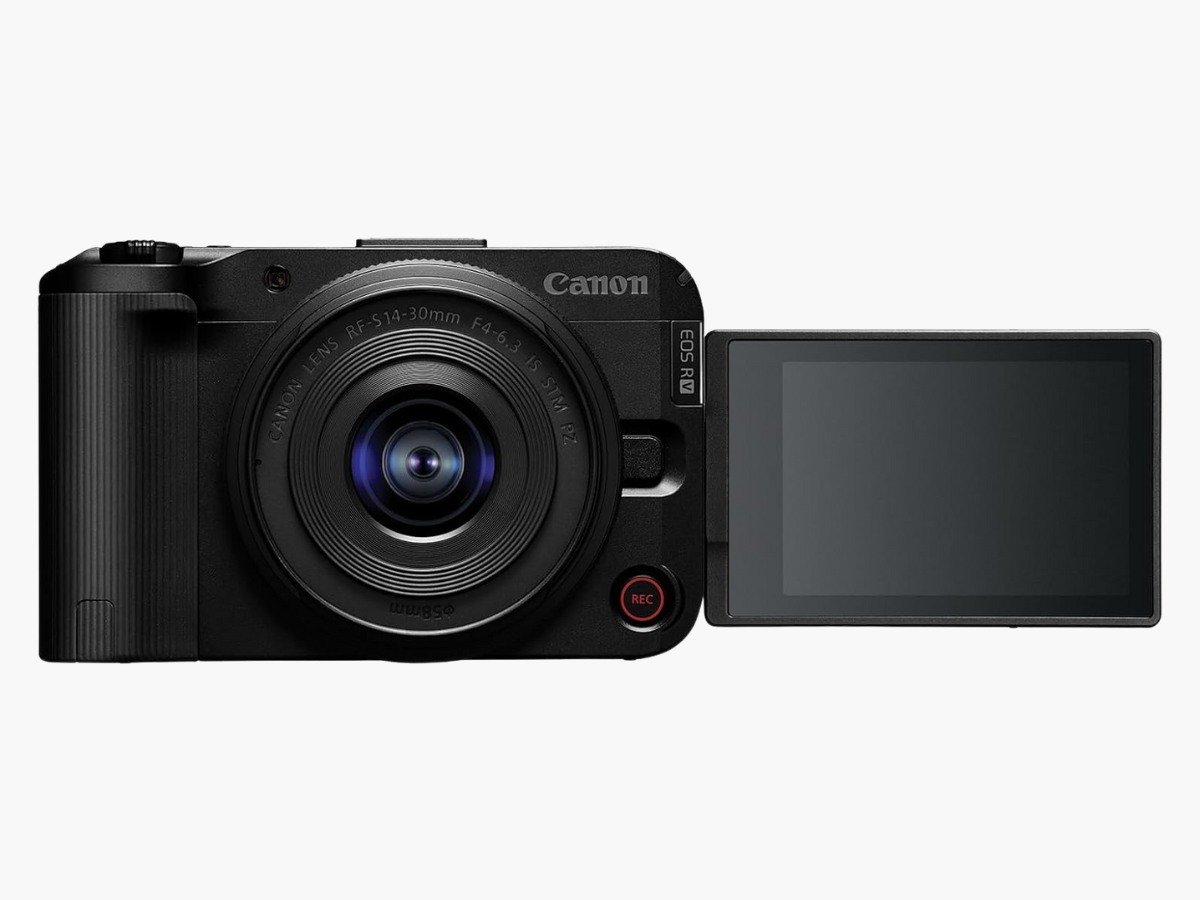
The Canon EOS R50 V carves a unique niche in the vlogging camera market with its vlogging-focused approach that prioritizes content creation without the traditional photography-centric design.
The R50 V introduces Canon’s new “V” designation, marking it as their first video-priority interchangeable lens camera. It’s a lightweight camera with weighs just 370g with battery and card, featuring a distinctive rectangular block design that replaces the traditional DSLR-like shape. Canon made a bold choice by removing the electronic viewfinder, dedicating the back panel primarily to the vari-angle touchscreen for maximum vlogging functionality.
We really enjoyed using the R50 V’s dual recording buttons. One sits on top while another rests on the front for self-recording. The rear panel packs five buttons and a multi-controller into a small space. A video-focused mode dial takes the place of standard PASM controls. Users get eight different video modes and just one for still photography.
Beyond standard recording, the R50 V offers specialized functions like Close-up Demo mode, which automatically shifts focus to products held up to the camera. Smooth Skin mode enhances appearance for vloggers, subsequently complemented by 14 different color filters for creative looks.
Audio and Portability
Its built-in microphone quality is good, but the camera also has mic and headphone ports for professional audio monitoring. The R50 V comes with a second tripod socket on the right side. This makes vertical video shooting easier.
Its 5-axis Movie Digital IS keeps movement under control and works with in-lens stabilization when available. Nevertheless, without in-body stabilization, the camera relies on digital correction which works best for static or subtle movements.
Video creators looking for a dedicated vlogging tool with interchangeable lenses will find great value in the Canon EOS R50 V. It costs $649 for the body alone or $800 with the RF-S 14-30mm kit lens.
So while it can’t compete with the full-frame cameras, the Powershot R50 V still makes sense as a pared-back choice for vloggers who want a mid-range option combined with great value. We recommend it if you want a hybrid camera to make vlogs and casual use combined in a single option.
The Best Compact Vlogging Camera
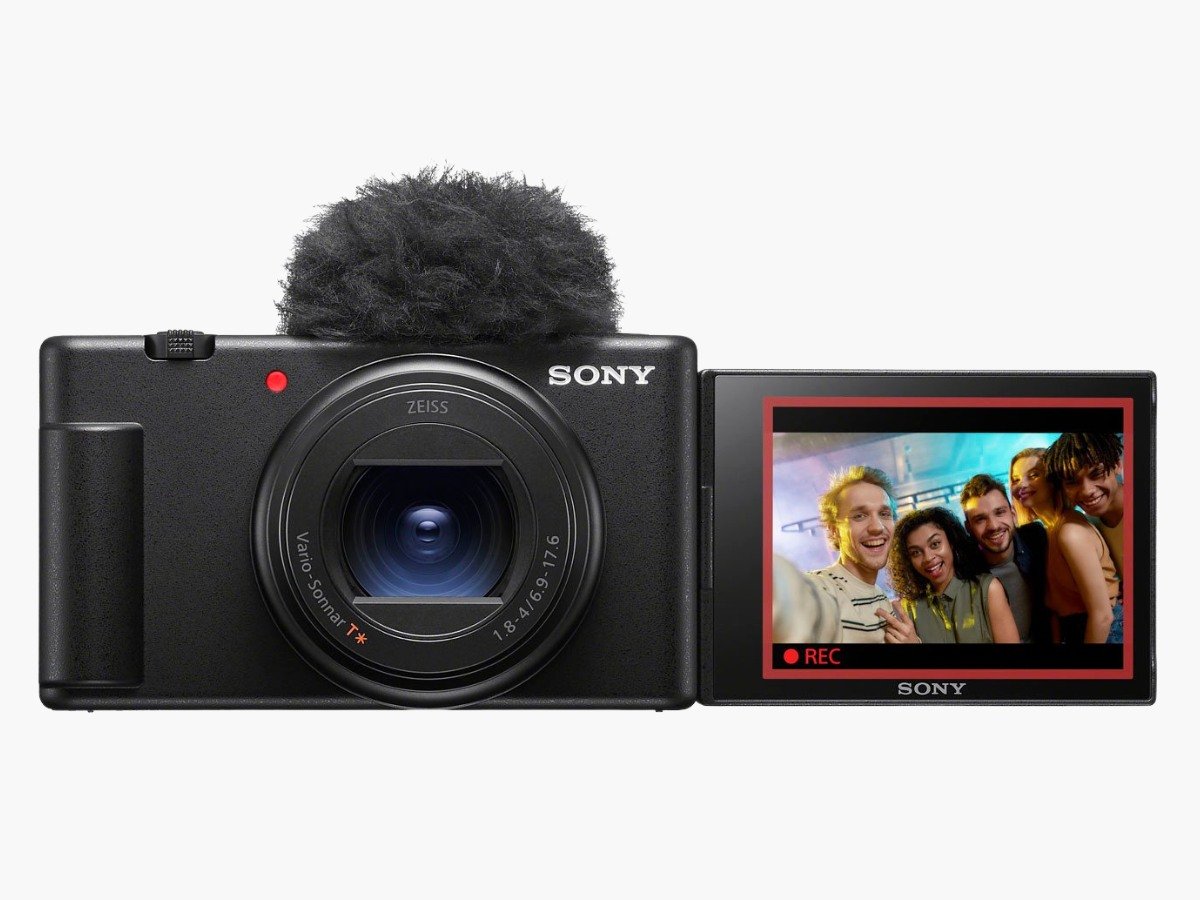
For vloggers looking for a compact vlogging camera made for portability and professional quality, the Sony ZV-1 II is our top recommendation. Its pocket-sized design makes it extremely convenient for on-the-go content creation and travel vlogging.
The ZV-1 II is capable of making 4K videos at 30 frames per second, giving you sharp footage of your travels. You can switch to Full HD resolution at 120fps to capture stunning slow-motion shots of waterfalls or street scenes with 5x slow-motion effects. Its XAVC S format delivers professional-quality footage with 8-bit color depth.
Unlike many compact cameras, the ZV-1 II includes specialized video profiles such as HLG, S-Log2, and S-Log3. These options give travel creators more flexibility during editing, though the 8-bit limitation means extensive color grading may cause image degradation.
Its autofocus system works great for travel vlogs with 315 phase detection and 425 contrast detection points. Its real-time tracking maintains focus on your face even when moving through bustling markets or scenic viewpoints. The ZV-1 II intelligently locks onto faces and eyes, staying with the main subject throughout your shots.
In fact, the new Multi-face Recognition mode automatically adjusts the aperture when additional people enter the frame, ensuring everyone stays in focus for those impromptu group shots during your travels. Also, its Product Showcase mode is equally impressive, shifting focus to any object you hold up to the camera—perfect for showcasing local souvenirs or food.
Premium audio sets the Sony ZV-1 II camera apart from smartphones due to its intelligent 3-capsule microphone. It offers directional settings that can be adjusted via the function menu: Front (ideal for self-recording), All Directions (for ambient sounds), or Rear (for narrating scenes). For windy beach locations or outdoor settings, the included windscreen attaches to the multi-interface shoe, significantly reducing wind noise. Should you need more professional audio, thanks to a 3.5mm microphone input compatible with 3-pole stereo mini plugs, though it lacks a headphone port.
ZV-1 II has a fully articulating touchscreen proves essential for travel vlogging, allowing you to monitor yourself from any angle. Consequently, framing shots becomes effortless whether you’re filming yourself in front of landmarks or capturing scenic b-roll. The touchscreen registers inputs quickly and can even be set to power the camera on or off when flipped open or closed. It also features a comfortable grip despite its compact size.
Unlike its predecessor, the ZV-1 II does not feature optical stabilization. Instead, it relies entirely on digital stabilization for video, which crops the frame slightly to create a buffer zone for corrections. For static shots or when using a tripod, turning stabilization off is recommended to prevent electronic “float”.
Moving shots get better with Active SteadyShot digital stabilization. It provides a more powerful stabilization effect but comes with a limitation—it crops the image by approximately 1.25x. Your wide 18mm equivalent focal length becomes roughly 24mm, which still works well for most vlog shots.
Unfortunately, Active SteadyShot cannot be used when recording at 120fps, so your slow-motion footage won’t benefit from the advanced stabilization. The standard electronic stabilization still works well for handheld shooting, but walking footage may appear somewhat jittery without a gimbal.
The Sony ZV-1 II stands out as the perfect travel vlogging companion thanks to its ultra-wide 18-50mm lens, pocket-friendly size, and thoughtful creator features. Priced at $799, it offers professional-quality video and portability. While its digital-only stabilization and 8-bit recording have limitations, the overall package offers tremendous value for money.
The Sony ZV-E10 II is our favorite compact camera for vlogging due to great portability. We think the Sony ZV-1 II owns what most people want from a compact vlogging camera. If the Sony α6700 is out of your price range, stepping down to the Sony ZV-E10 II is a great option to save a bit of money.
The Best Portable Vlogging Camera For Underwater Use
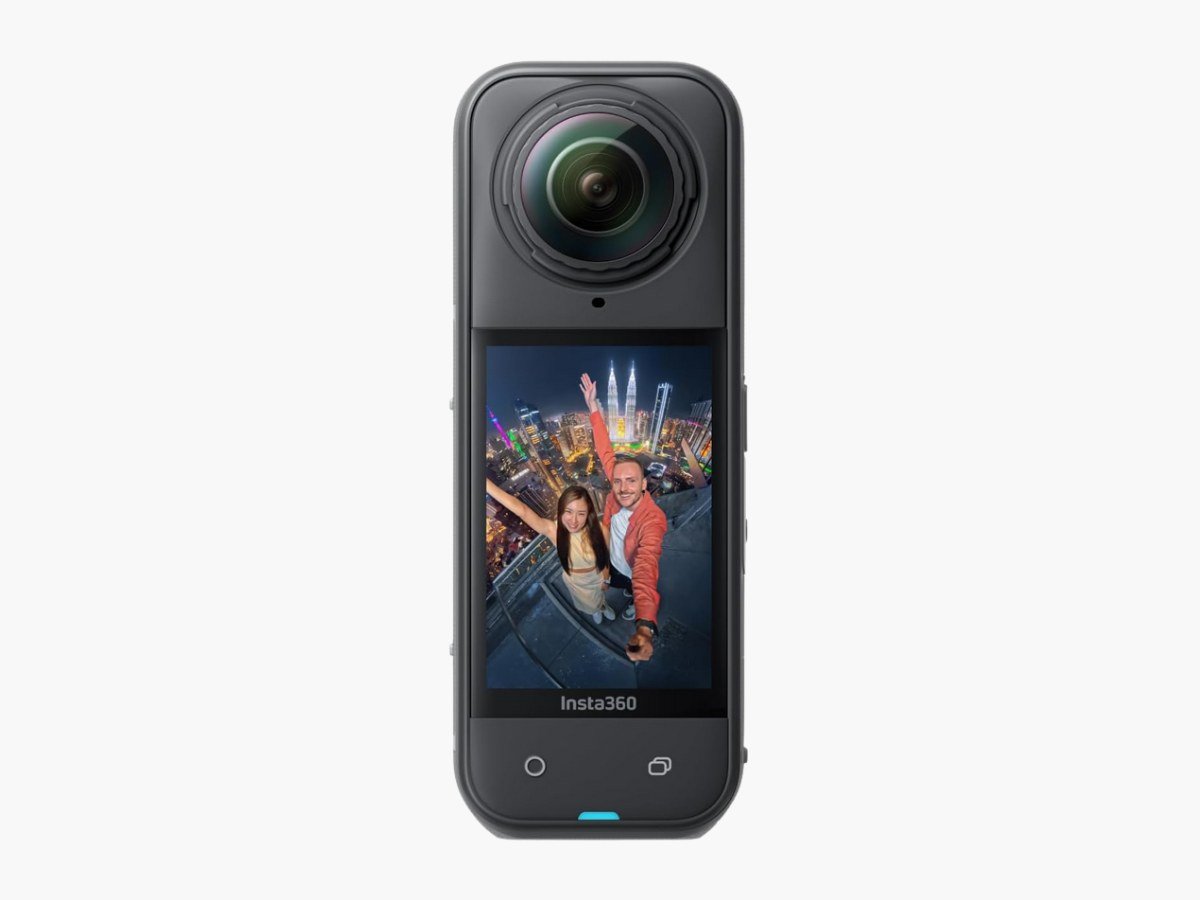
Based on our in-depth videography tests, the Insta360 X5 is the best 360-degree camera you can buy right now. It’s your dream chance to transform vlogging with its 360-degree capture technology to record everything around you and pick your best angles later.
Powered by dual 1/1.28″ sensors that are 144% larger than its predecessor’s, the X5 captures stunning 8K30fps 360° footage. What makes this resolution particularly valuable is how it maintains quality after reframing—when you crop into specific angles, you’ll still get approximately 4K resolution. The camera actually captures near 11K worth of data before processing it down to 8K.
The X5’s tall, slim profile works perfectly with invisible selfie sticks. This pocket-sized powerhouse weighs nowhere near half a pound. It has an accessible interface through its small display screen. You can start recording by twisting the selfie stick twice – a clever “twist-to-shoot” feature.
Beyond standard recording, the X5 introduces PureVideo mode—leveraging triple AI processing chips to dramatically enhance low-light performance by approximately two stops over the X4. The groundbreaking InstaFrame mode simultaneously captures both a reframed flat video ready for immediate sharing and a complete 360° version for later editing.
The X5 features IP68 waterproofing to 49ft (15m) for underwater vlogging. Perhaps most impressively, it’s the first major 360° camera with fully replaceable lenses. A damaged lens needs just a simple swap with the $29.99 Replacement Lens Kit. No need to send the whole camera for repairs.
We like the FlowState stabilization with 360° Horizon Lock because it adjust video whatever your movement even in challenging conditions like mountain biking or off-road driving. After shooting, the Insta360 app offers AI-powered editing tools including automatic highlight creation.
Vloggers can forget about framing – they just record and choose their shots later. This feature shines especially when you have unexpected travel moments happening all around. Another brand mark of Insta360 is its invisible selfie stick that creates unique drone-like third-person views.
Overall, it’s a very capable video camera for the price. If you want 360-degree videos, the Insta360 X5 is the our favorite choice to go. This 360 camera works like a traditional action camera, but it offers fantastic 360-degree video and photos.
How we test vlogging Cameras
Our vlogging camera tests can save you thousands of dollars and countless hours of frustration. From assessing video quality in various lighting conditions to evaluating stabilization during movement, we properly tested every feature so you can make vlogs that truly represents your creative vision. Furthermore, understanding specific features like 4K resolution capabilities, battery performance during extended shoots, and autofocus tracking reliability helps match equipment to your unique vlogging style. Additionally, factors such as portability for travel vloggers, connectivity options for live streaming, and flip display functionality for self-recording deserve thorough evaluation.
These tests let us check the camera’s Face and Eye tracking autofocus and see how well its stabilization works. We look at both electronic and mechanical stabilization if the camera includes them. We also take a closer look at something people forget about—the built-in microphones on these cameras. If there’s a microphone input, we hook up an external lav mic to compare its sound quality with the internal mic.
We also reviewed the latest vlogging cameras that come with cool extras like flat color profiles flip-out touchscreens, ND filters built right into the camera, and even special features. For example, Sony offers a ‘product showcase’ mode that works great for creators running YouTube channels from home.When possible, we perform tests on all these functions to understand how they compare against similar options. We then summarize our findings using our observations about the camera’s design, build, video and audio performance, and available features.
What you should look for in a vlog camera according to the experts
Key features of a vlogging camera include video quality, autofocus, stabilization built into the camera, and audio setups. These areas are the main focus of our testing process. To check video quality, we record using the camera’s highest resolution and frame rate in different handheld scenarios. This includes common styles like walk-and-talk scenes to analyze how the camera processes skin tones, colors, details, and handles rolling shutter. We also test with bright and dark areas to assess how auto-exposure and white balance adjust when lighting shifts.
Video resolution and frame rate
Resolution makes a real difference in both the quality and versatility of your videos. When I’m evaluating vlogging cameras, 4K capability stands out as one of those features that keeps paying dividends long after you’ve made the purchase.
4K vs 1080p: Editing Flexibility and Cropping
The jump from standard HD (1080p) to 4K quadruples your resolution—you’re getting roughly 8.3 million pixels versus just 2.1 million in 1080p footage. This massive increase offers remarkable editing flexibility. You might think this doesn’t matter much for simple vlogs, but the advantages become crystal clear once you’re in post-production. With 4K resolution, you can crop up to 50% of the frame while still maintaining full HD quality in the final export. Essentially, this gives me multiple camera angles from a single recording. I might frame a wide shot showing both myself and my surroundings, then crop in for close-ups during editing—all without any quality loss.
4K recording also provides substantial headroom for color grading and correction without degrading image quality. The extra resolution future-proofs your content too, as 4K displays become increasingly common. Your videos will remain visually competitive for years to come.
Frame Rates: 60fps and 120fps for Smooth Motion
Frame rate dramatically impacts how your footage feels. Standard 24fps delivers that cinematic look, while 60fps creates noticeably smoother motion—particularly valuable for action sequences or product demonstrations. Higher frame rates offer another major benefit: the ability to create dramatic slow-motion footage. Recording at 60fps allows for 2.5x slow-motion when played back at 24fps, while 120fps footage can be slowed down by 5x without looking choppy. These higher frame rates provide creative options that would otherwise require far more expensive equipment.
During my testing of latest vlogging cameras, models offering both 4K/60fps and 1080p/120fps strike the ideal balance between quality and versatility. Storage concerns? Yes, 4K files are larger. But memory cards have become remarkably affordable, making this a minor consideration compared to the benefits gained. Modern 128GB SD cards cost less than $20, eliminating what was once a significant barrier to 4K adoption.
Frame rate impacts motion smoothness and slow-motion capabilities. Standard frame rates include:
- 24fps: Creates a cinematic look ideal for narrative-style vlogs
- 30fps: Standard for most online content
- 60fps: Perfect for action sequences or smooth slow-motion playback
- 120fps or higher: Enables dramatic slow-motion effects
Vari-angle Flip Screens
If you’re making vlogs alone, you should look for cameras with flip-out touchscreens because these make framing shots alone much simpler. It solves out one of the biggest headaches in solo vlogging—trying to guess if you’re actually in frame. When you’re filming yourself without anyone behind the camera, this feature becomes absolutely essential for keeping tabs on your shot in real-time.
Fully Articulated vs Tilt Screens
You’ve got two main screen types to choose from, and each has its strengths. Fully articulated (or swivel) screens mount to the side of your camera and rotate all the way around, so you can see yourself from pretty much any angle. These screens give you maximum flexibility—forward, backward, up, down, or folded inward to protect the LCD when you’re done.
Tilt screens take a different approach. They hinge at the bottom and flip vertically up or down. Sure, they’re more limited in range, but they keep the optical axis steady during panning, which makes them brilliant for tracking moving subjects without that disorienting camera wobble. They’re also more subtle for street photography and generally tougher—less likely to snap off if you’re clumsy with your gear.
Which one should you go for? It really comes down to how you shoot. Street photographers usually prefer tilt screens because they’re less obvious, but if you’re constantly filming yourself, you’ll want that fully articulated display that can flip forward. Plus, that inward-folding protection is genuinely useful when you’re packing up.
Touch Controls for On-the-Go Adjustments
Most modern flip screens come with touch functionality, and honestly, it changes how you work with your camera. Touch controls mean you can make quick tweaks without fumbling around for physical buttons. On models that support it, you can:
- Tap to focus on specific subjects
- Swipe through menu options
- Adjust settings while recording
- Zoom in/out with pinch gestures
The real value here is that a proper flip screen works with you, not against you. No more getting back to your computer only to find you were half out of frame or looked terrible the entire time. It’s one of those features that seems small but can save you serious money by preventing botched shoots and costly reshoots.
Stabilization
If you prefer stable and smooth vlogs, try using a camera that has in-body image stabilization. Shaky footage is the quickest way to make your vlogs look amateur. Nothing screams “I filmed this on my lunch break” quite like footage that bounces around like a pinball machine. Good news though—modern stabilization tech means you can skip those expensive external gimbals that’ll set you back $150-300.
Optical vs Electronic Stabilization
Image stabilization works by correcting motion blur in your recordings, stopping those stutters and vibrations you get when shooting handheld. There are two main types, and each has its strengths. Optical Image Stabilization (OIS)—sometimes called Mechanical Image Stabilization—uses actual physical bits inside the camera lens or sensor to fight camera shake. When you move slightly, gyroscopes and motion sensors spot this movement and physically shift the lens elements or sensor position in the opposite direction. This mechanical approach works brilliantly for bigger, more sudden camera movements since it stabilizes the image before it even reaches the sensor.
Electronic Image Stabilization (EIS) takes a completely different approach, relying on software algorithms instead. This digital method crops the image slightly and repositions it frame-by-frame to compensate for movement. It uses less power than OIS, but you might see a slight drop in image quality because of that cropping. For vloggers who do a lot of walking while talking, camera stabilization smooths out those footstep jiggles and makes footage much more watchable. The sweet spot? Look for cameras that offer both systems working together—they’ll correct a much wider range of movements.
Cameras offer three stabilization types:
- Optical (OIS): Uses moving lens elements or sensor
- Electronic (EIS): Crops and shifts the frame digitally
- Hybrid: Combines both approaches for superior results
Gyro Data Integration
The latest advancement in stabilization involves gyro data integration, which really takes things up a notch. This software-based system uses a built-in gyroscope to record every single camera movement while you’re filming. Unlike traditional stabilization that works in real-time, this data gets applied during post-processing to smooth out vibrations with serious precision.
Gyro-stabilization really shines when dealing with complex movements that would make conventional stabilization systems throw in the towel. After processing, the video gets cropped by a certain percentage to achieve those smooth results.
As of 2025, vlogging cameras often combine OIS, EIS, and gyro data capabilities all in one package. Notable models packing this tech include the Sony FX2, Z CAM E2-M4 II 4K, and Z CAM E2-F6 II 6K. The real kicker? Proper stabilization can save you hundreds of dollars by eliminating the need for external gimbals, which typically cost $150-300 and add serious bulk to your setup. That’s money better spent elsewhere.
Autofocus That Tracks You, Not the Background
Nothing ruins a vlog quite like discovering you’ve been a blurry mess for the entire shoot. For solo creators working without a camera operator, advanced autofocus isn’t just nice to have—it’s essential. Our testing reveals how quickly a camera locks onto subjects and maintains focus during movement. Specifically, evaluate face and eye tracking capabilities by moving in and out of frame rapidly.
Eye-Tracking Autofocus for Face-Centric Vlogs
Eye-detection autofocus has gotten scary good in recent years. This AI-powered feature locks onto eyes—human, dog, or cat—and keeps them sharp even as you move around the frame. It’s particularly brilliant when you can’t be behind the camera yourself, which is pretty much every vlog situation. The tech really shows its worth when you’re shooting with wider apertures like f/2.8 or faster, where the depth of field gets razor-thin. Without eye-tracking, you’d be constantly fiddling with focus points. With it? The camera handles everything while you focus on, well, your actual frame.
The latest AI-based autofocus in situations that used to be problematic—backlit scenes, dim lighting, even when you’re wearing glasses or partially turned away. Your face stays sharp no matter what you’re doing, which means less time worrying about technical stuff and more time connecting with your audience.
Real-Time Subject Tracking in Motion
Beyond eye detection, today’s vlogging cameras offer impressive subject tracking. Touch the screen to select yourself, and the camera’s autofocus system will follow you around like a well-trained camera operator. This feature is a game-changer for walk-and-talk vlogs or demonstration videos where you need to move freely. The camera’s AI algorithms track subjects with speed and precision that even experienced videographers struggle to match manually.
Some higher-end models include “Presenter Lock” technology that maintains focus on you even in crowded environments. Many cameras also let you switch between multiple subjects with a simple button press—perfect for interviews or multi-person content. The real kicker? This sophisticated tracking tech saves you from buying follow focus systems or hiring camera operators. That’s a substantial cost reduction for independent creators who’d otherwise need to shell out hundreds or thousands for additional gear.
Low-light Performance
Proper lighting gear can easily run you hundreds of dollars, but a decent vlogging camera with good low-light performance can cut that expense way down. I’ve tested cameras that shoot perfectly usable footage in conditions where others would need a whole lighting setup.
Sensor Size: APS-C vs Full Frame
Sensor size makes a real difference when you’re shooting in challenging light. Full-frame sensors (36 x 24mm) pack in larger photosites that collect more light than their APS-C counterparts. Think of each photosite as a bucket collecting light—bigger buckets capture more photons. What this means in practice is cleaner images with way less digital noise when you crank up the ISO.
Full-frame sensors typically perform 1-2 stops better in low light compared to APS-C sensors. Put it this way: while an APS-C camera might need ISO 3200 to get a decent exposure, a full-frame model could nail the same shot at ISO 800, giving you noticeably cleaner footage.
Wide Aperture Lenses for Making Indoor and Night Vlogs
Lens aperture is where the real magic happens for dim shooting conditions. Professional filmmakers swear by f/2.8 as the bare minimum for quality low-light work. But lenses with wider apertures like f/1.8, f/1.4, or even f/0.95 can practically see in the dark. Prime lenses with wide apertures—something like a 50mm f/1.4 (around $340) or Sigma 30mm f/1.4 ($499)—offer excellent bang for your buck. Investing in fast glass like this cuts out the need for multiple lighting fixtures while giving you that professional background blur that viewers love.
Audio quality with and without external mics
Audio testing is often overlooked yet absolutely critical—poor sound will drive viewers away regardless of video quality. Because it can make or break your vlogging content.
Directional Mics with Wind Reduction
Latest vlogging cameras comes with advanced audio technology. Take Sony’s ZV series—it’s got built-in directional 3-capsule microphones that are tuned to pick up your voice clearly, even when you’re dealing with noisy environments. These forward-facing mics focus on sounds coming from in front of the camera, which is exactly where you’ll be standing.
Wind noise? That’s the bane of every outdoor vlogger’s existence. Even a gentle breeze can turn your audio into a rumbling mess. The good news is that many current models come with wind reduction tech built right in, plus they include those fuzzy windscreens (some people call them “tribbles” or “dead cats”) that physically block air from hitting the microphone elements. Trust me, this simple little accessory can save your outdoor footage from sounding like you’re filming inside a wind tunnel.
Mic Input and Headphone Jack for Upgrades
Even with all these built-in audio improvements, having ports for external gear matters as your channel grows. A 3.5mm microphone input lets you plug in higher-quality mics when you need them—think shotgun mics like the Rode VideoMic series or lavalier mics from Shure and Sennheiser.
Here’s something many people overlook: the headphone jack. This little port lets you monitor your audio levels while you’re recording, which prevents the absolute nightmare of discovering audio problems after you’ve wrapped a shoot. Without it, you’re essentially flying blind when it comes to sound quality.
Wireless microphone systems have become a game-changer for vlogging setups. Options like DJI’s Bluetooth microphones give you excellent audio quality without needing extra transmitters or receivers. These systems offer amazing flexibility when you need to move around while still capturing professional-quality sound.
Battery Life That Doesn't Interrupt Your Shoot
Nothing kills a good vlogging session faster than your camera dying mid-sentence. Trust me, I’ve been there—you’re halfway through the perfect take, really hitting your stride, and then everything goes black. It’s the sort of thing that makes you want to throw the camera out the window.
Minimum Runtime Expectations for Vloggers
You’ll want at least 70-90 minutes of continuous recording time for proper vlogging work. That gives you enough breathing room for typical sessions without constantly checking your battery indicator like you’re monitoring a ticking time bomb. The reality is that battery performance varies wildly between models—some entry-level options barely scrape together 45 minutes of 4K recording, while premium cameras can push past two hours on a single charge.
Battery capacity is always a balancing act with portability. Bigger batteries mean longer shoots, but they also add weight to your kit. This becomes particularly noticeable during extended shoots or travel vlogging where every ounce counts and you’re already lugging around enough gear.
Most vloggers I know just carry spare batteries as backup insurance. Fortunately, replacement batteries for popular vlogging cameras typically run $30-60, which is reasonable when you consider the alternative is missing that perfect moment because your camera conked out.
USB-C Charging While Recording
Here’s where modern vlogging cameras really shine—USB-C power delivery compatibility. This feature lets you record continuously while plugged into external power sources like power banks or wall adapters, which is absolutely brilliant for what it solves.
The benefits are twofold: you can extend recording sessions indefinitely without interruption, and you avoid constantly opening the battery door, which eventually leads to wear and loose connections. For studio work or lengthy interview sessions, this essentially turns your portable camera into a permanent recording setup without the hassle.
Some higher-end models even support hot-swapping batteries while plugged in, meaning truly unlimited recording time. It’s one of those features that seems minor until you actually need it, then you wonder how you ever managed without it.
Connectivity That Speeds Up Your Workflow
Modern connectivity can save you hours of fiddling with memory cards and cables. Trust me, I’ve spent way too much time transferring files the old-fashioned way, and these newer features are absolute game-changers for your editing workflow.
Wi-Fi and Bluetooth for Quick Transfers
Wireless transfers cut out the need for card readers or cables between shoots entirely. Most current vlogging cameras pack both Wi-Fi and Bluetooth, and here’s the clever bit—each handles different jobs. Bluetooth manages the low-power stuff like browsing files, while Wi-Fi does the heavy lifting for actual transfers. This dual approach keeps your battery from dying while still moving files at decent speeds.
The numbers back this up, too. A survey found that 68% of casual vloggers now prioritize wireless connectivity when buying new cameras. Makes sense when you consider that many cameras can fire a 20MP JPEG to your phone in just 8 seconds. That’s fast enough to post content while you’re still on location.
USB-C and Cloud Sync Options
For reliability, though, USB-C connections still win. This method typically beats wireless for speed, especially when you’re moving RAW files or long video clips. USB 3.0 and 3.1 standards push data at 5 Gbps and 10 Gbps respectively—that’s proper fast. Cloud integration has become huge in 2025. Many models now upload footage straight to cloud storage without needing your phone as a middleman. Services like Frame.io make it dead simple—connect to WiFi, punch in a six-digit code, and start uploading.
Best vlogging cameras FAQ
Are vlogging cameras actually good?
Absolutely yes. we’ve tested enough cameras to know that dedicated vlogging models deliver on their promises, and it’s not even close when you compare them side-by-side with alternatives.
What really sets these cameras apart, though, are the features built specifically for content creators. The autofocus systems with eye and object tracking work brilliantly for keeping you sharp even when you’re moving around. And that in-camera stabilization with gyro data? It smooths out shaky footage without needing to lug around a separate gimbal.
Battery life is another area where dedicated vlogging cameras shine. Professional models give you proper recording time—Sony reckons around 3 hours per battery with their α6700. That means you’re not constantly worrying about your camera dying mid-shoot.
Here’s the thing: vlogging cameras just handle better. The ergonomics, manual controls, and overall versatility make them feel like tools designed for the job. They solve the specific problems content creators actually face, from shooting in dim light to capturing clean audio. For serious vloggers, that makes them worth every penny.
Is a vlogging camera better than a smartphone camera?
Yes, and there are a ton of reasons for this. Here’s the thing about dedicated vlogging cameras—they typically pack larger sensors that deliver better dynamic range and superior low-light performance. Even mid-range models produce significantly cleaner footage in dim conditions, where smartphones often create grainy or artificial-looking results. I’ve seen this firsthand during my testing, and the difference is pretty noticeable once you know what to look for.
The lens game is where vlogging cameras really shine. Unlike the fixed lenses on phones, these cameras offer interchangeable options—from wide-angle for landscapes to prime lenses for sharp close-ups. This flexibility lets creators experiment with different visual styles without being locked into one focal length.
Audio quality? That’s another win for dedicated cameras. They often include directional microphones with wind reduction tech and dedicated external microphone inputs. Battery performance tells a similar story—smartphones typically drain within an hour of 4K recording, whereas vlogging cameras can keep rolling for 2-3 hours.
Are vlogging cameras really worth it?
The investment varies wildly depending on what you’re after. I’ve researched the spending habits of successful creators, and the data tells an interesting story—14 celebrity vloggers with over 1M subscribers typically invest between $1300-$1900 in their camera setups. Meanwhile, there are over 100,000 aspiring content creators with 20K-100K subscribers all looking to upgrade their gear at different price points.
The market seems to agree with this logic—vlogging camera demand is growing at 8.7% CAGR through 2027. For creators who’ve moved beyond casual content, the specialized capabilities justify the expense, especially when you factor in all the built-in accessories and workflow improvements you get without buying them separately.
Are vlogging cameras good for making YouTube videos?
YouTube has particular demands that make vlogging cameras especially valuable. Once you’re serious about monetization, video quality becomes absolutely crucial—viewers expect sharp visuals, clean audio, and stable footage. The technical advantages are clear. Models shooting 4K at 60fps (or 120fps for slow-motion) give you remarkable editing flexibility. You can crop footage, create multiple angles from one take, and maintain quality even after heavy post-production work.
Your content style matters when choosing the right tool. Food vloggers need cameras with excellent close-up capabilities and interchangeable lenses, while travel creators might prioritize compact models with solid stabilization. Adventure YouTubers often pair their main camera with action cams for B-roll footage.
Does every vlogging camera fit every video creator?
Nope. Not even close. There’s no magic vlogging camera that works perfectly for everyone, and anyone telling you otherwise is probably trying to sell you something. What works brilliantly for a daily lifestyle vlogger might be completely wrong for a travel enthusiast or tech reviewer.
Experience level matters more than most people realize when picking gear. Beginners usually start with smartphones or basic cameras, focusing on getting comfortable with the whole filming-yourself thing. Once you’ve got the hang of it and move into intermediate territory, you’ll likely want mid-range cameras with better low-light performance and more manual control options. The pros? They need the full package—high-end gear with interchangeable lenses and all the advanced features that come with serious money.

